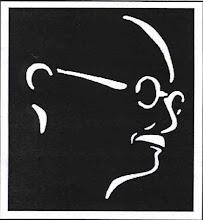Dated: September 14, 2008 SWAMINATHAN AIYAR
Having overcome a series of obstacles ranging from Prakash Karat to the Nuclear Suppliers Group, India's plans for a massive nuclear power programme now face an even more daunting obstacle - Mamata Banerjee. Having tasted blood at Nandigram and Singur, she will not sit by quietly and allow a huge nuclear power park to come up in West Bengal.
Some analysts will say I am running too far forward: the Indo-US nuclear deal still faces formidable hurdles in the US Congress. President Bush has requested US Congress to waive its usual 30-day waiting period for considering fresh legislation, and rush through clearance of the 123 bilateral agreement. This is being resisted strongly by anti-proliferators. However, i believe that the momentum behind the deal is now unstoppable in the US. The real hurdles lie elsewhere.
During the three years of negotiation on the nuclear deal, the Nuclear Power Corporation of India Ltd (NPCIL) has taken much advance action. It has got official clearance for four massive nuclear parks that could generate as much as 45,000 MW, equal to roughly one-third of India's entire installed capacity today. The nuclear parks will come up at Patisonapur in Orissa, Mithirvirdi in Gujarat, Kowadi in Andhra Pradesh, and Haripur in West Bengal.
The proposed location in West Bengal is close to Nandigram in east Midnapur. At Nandigram, Mamata fought tooth and nail to prevent the Left Front government from establishing a Special Economic Zone. Her supporters and allies - including sundry Maoist groups - took virtual control of Nandigram. At one stage no government official could enter the area. Eventually, the Left Front cadres staged a bloody counter-strike to regain control, killing many villagers. The violence was far greater than at the other land acquisition battle in Singur, where Tata Motors wants to build the Nano car.
After ruling the state for 31 years, the Left Front suddenly looks vulnerable because of Mamata's campaigns over land acquisition. Her Trinamool Congress thrashed the Left Front in both Nandigram and Singur in the panchayat elections last May. She has found an issue that could help her oust the Marxists and come to power herself.
At Singur and Nandigram, she waxed eloquent over the forced acquisition of land from unwilling peasants. At Haripur in east Midnapur, she will have a second trump card to play. Nuclear power plants carry risks of radiation over a substantial area. NGOs claim that people living in an area of maybe 100 square kilometres around a power plant run risks of nuclear radiation and contamination of water. Mamata will surely highlight and exaggerate these risks. That, after all, is her best bet to attain political power.
All four sites chosen by the NPCIL for nuclear parks are at coastal locations. Much of the massive nuclear equipment to be imported for the parks is too big to fit on railway wagons or trucks, and is better transported by barges to a coastal site. All four sites have been cleared for soil quality, flood risk, seismicity and other geo-morphological features. But even if they flood-proof and earthquake-proof, they are not proof against the greatest hazard of all, Mamata Banerjee.
At Koodankulam in Tamil Nadu, two Russian nuclear power plants of 1,000 MW each are under installation. This project has been marked by protests from villagers for a decade. They claim that the Environmental Impact Assessment was a farce, and that the project poses serious health hazards.
Sandeep Pandey, winner of the Magsaysay Award in 2002, leads the National Alliance of People's Movements in India. He claims that public hearings at Koodankulam have repeatedly been postponed to fob off protesters. He cites a study by Dr Kuglandi showing that the cancer rate is 12 per lakh of population around the existing Kalpakkam nuclear power plant, against the normal 2-4 per lakh. He fears that cancer rates will also go up at other nuclear sites. Mamata looks certain to echo these fears.
The central government claims that every nuclear site is examined thoroughly for possible risks, and that villagers around the new sites have no reason whatsoever for apprehension. However, the government's assurances have failed to convince villagers in Andhra Pradesh and Meghalaya, where the government proposes to mine uranium. These villagers have thwarted uranium mining for years, even though this is a top security priority for the government.
The Koodankulam project initially proposed to tap water from the nearby Pechiparai dam. This provoked a storm of protest from villagers, who argued that not a drop of irrigation water should be diverted to the project. NPCIL now claims that the water for the project will come entirely from desalination of sea water.
This holds lessons for the West Bengal government. It must from the start insist that no fresh water will be diverted from irrigation to the proposed nuclear park, whose needs must be met entirely by desalination. It needs to involve local people and convince them about measures to combat radiation risks, and not leave this to the central government. Whether that will credibly counter the coming attack of Mamata Banerjee remains to be seen.

No comments:
Post a Comment